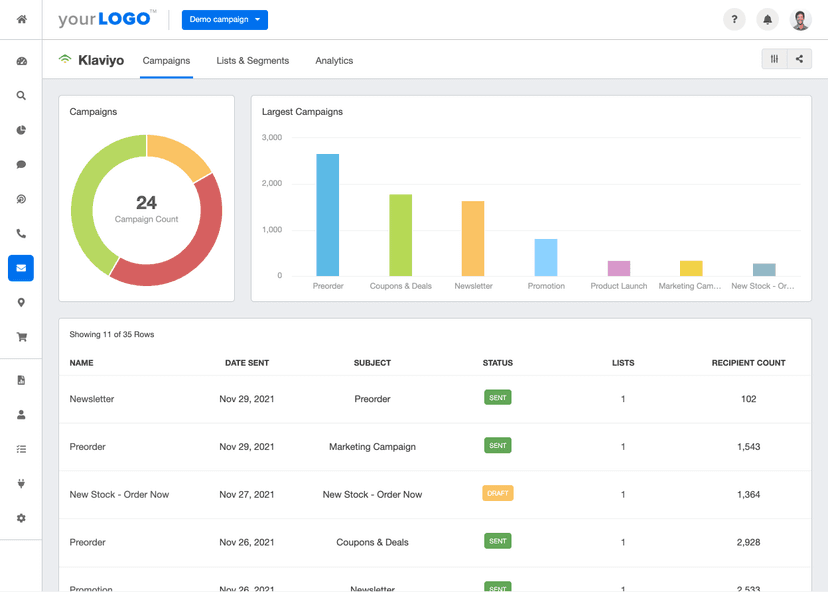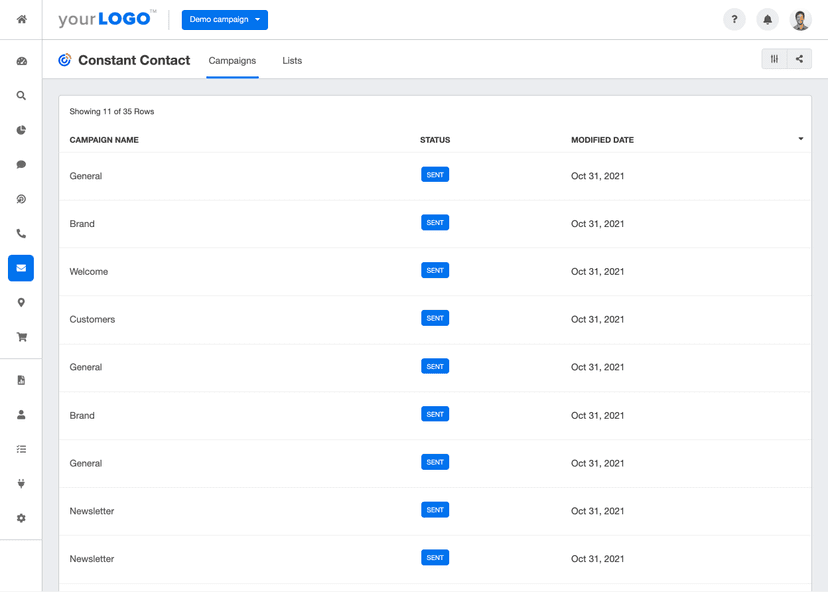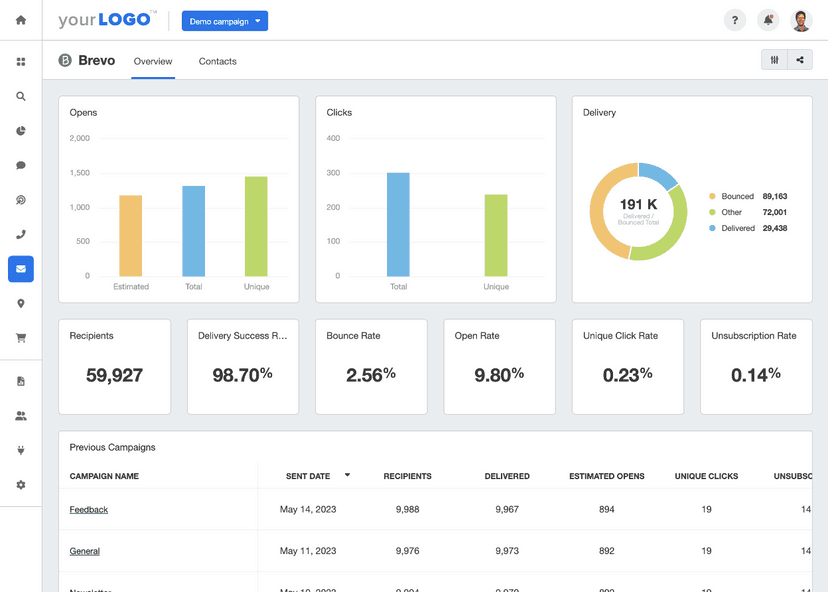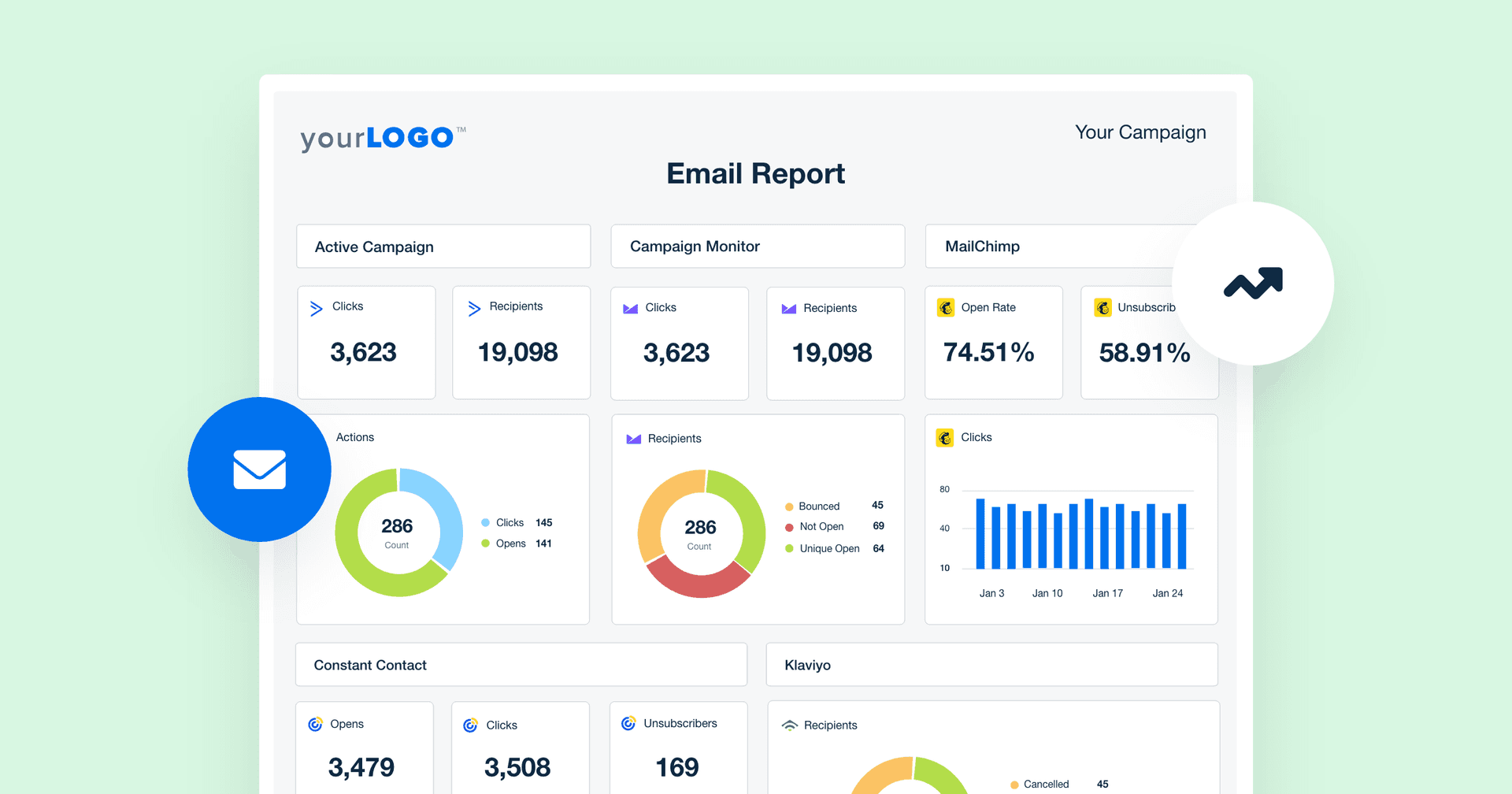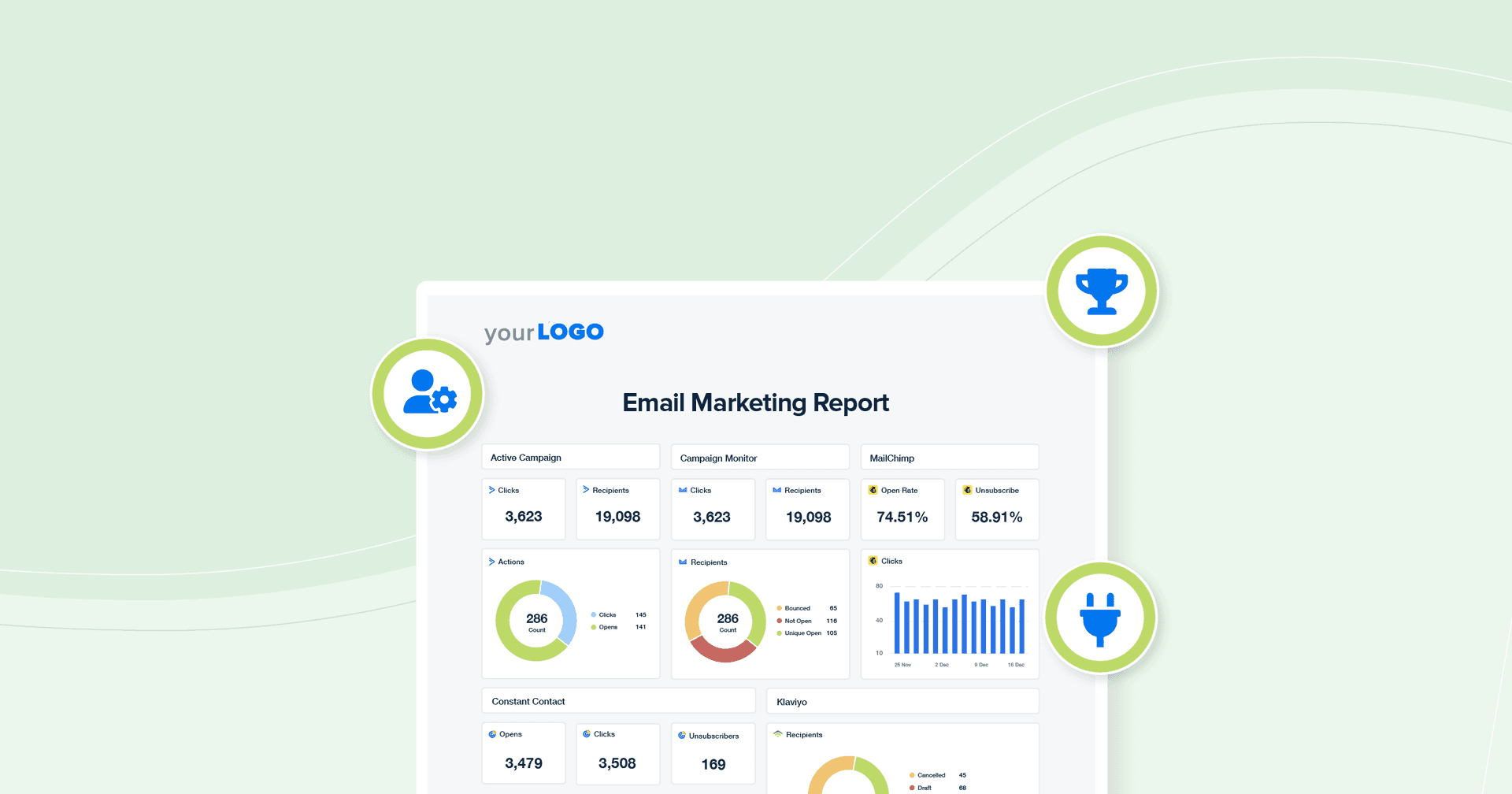Email Open Rate
Measuring Engagement
Assess how well email content resonates with the target audience.
Segmentation
Segment the audience by analyzing who opens emails more frequently.
A/B Testing
Compare open rates between email variations to identify which emails perform best.
Client Reports
Showcase the level of engagement generated by email campaigns.
Why Email Open Rate Is Important
Why does Email Open Rate matter? Typically, engagement equals connection. When emails get opened, it signifies that the content speaks to the audience, resonates with their interests, and sparks their curiosity.
High open rates are not vanity metrics. This metric is tangible proof that the emails are cutting through the noise and leaving an impression.
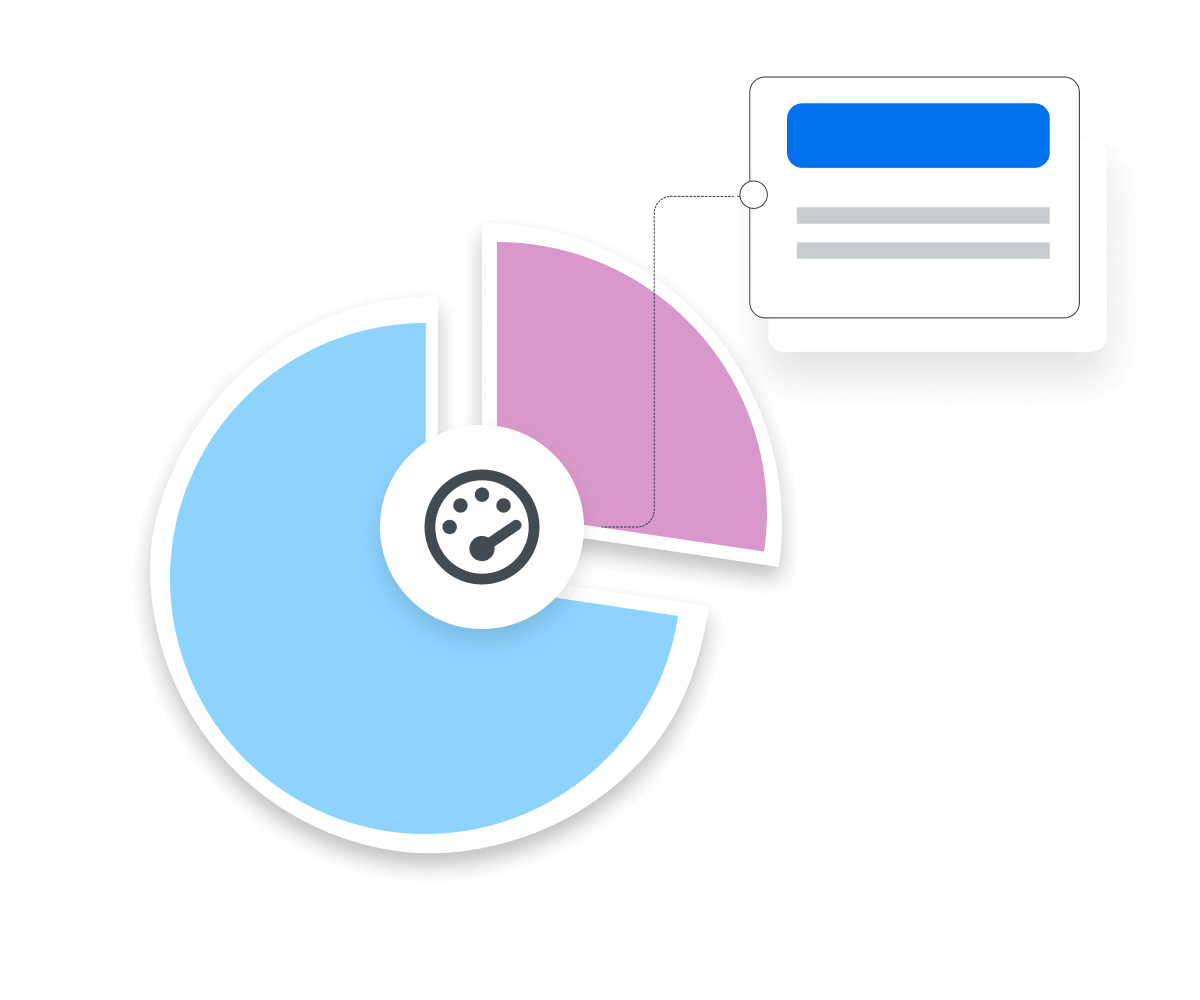
Stop Wasting Time on Manual Reports... Get Email Insights Faster With AgencyAnalytics
How Email Open Rate Relates to Other KPIs
Understanding the connection between Email Open Rate and other metrics is the key to optimizing email campaigns and achieving tangible results. For example, after the email is opened, Click-Through Rates and Conversion Rate metrics help to deliver a more complete picture of the campaign’s success.
Email Open Rate is also connected to Bounce Rate. A high Email Open Rate, along with a high Bounce Rate suggests problems with the email list quality. Keeping a clean list ensures messages reach the right inboxes.
Revenue and ROI are everything and are critical ways to showcase agency value to clients. Keep in mind that a high open rate is promising, but it doesn't guarantee success. Agencies use these email marketing metrics together to fine-tune strategies for better results and make connections to what impacts a client’s bottom line.
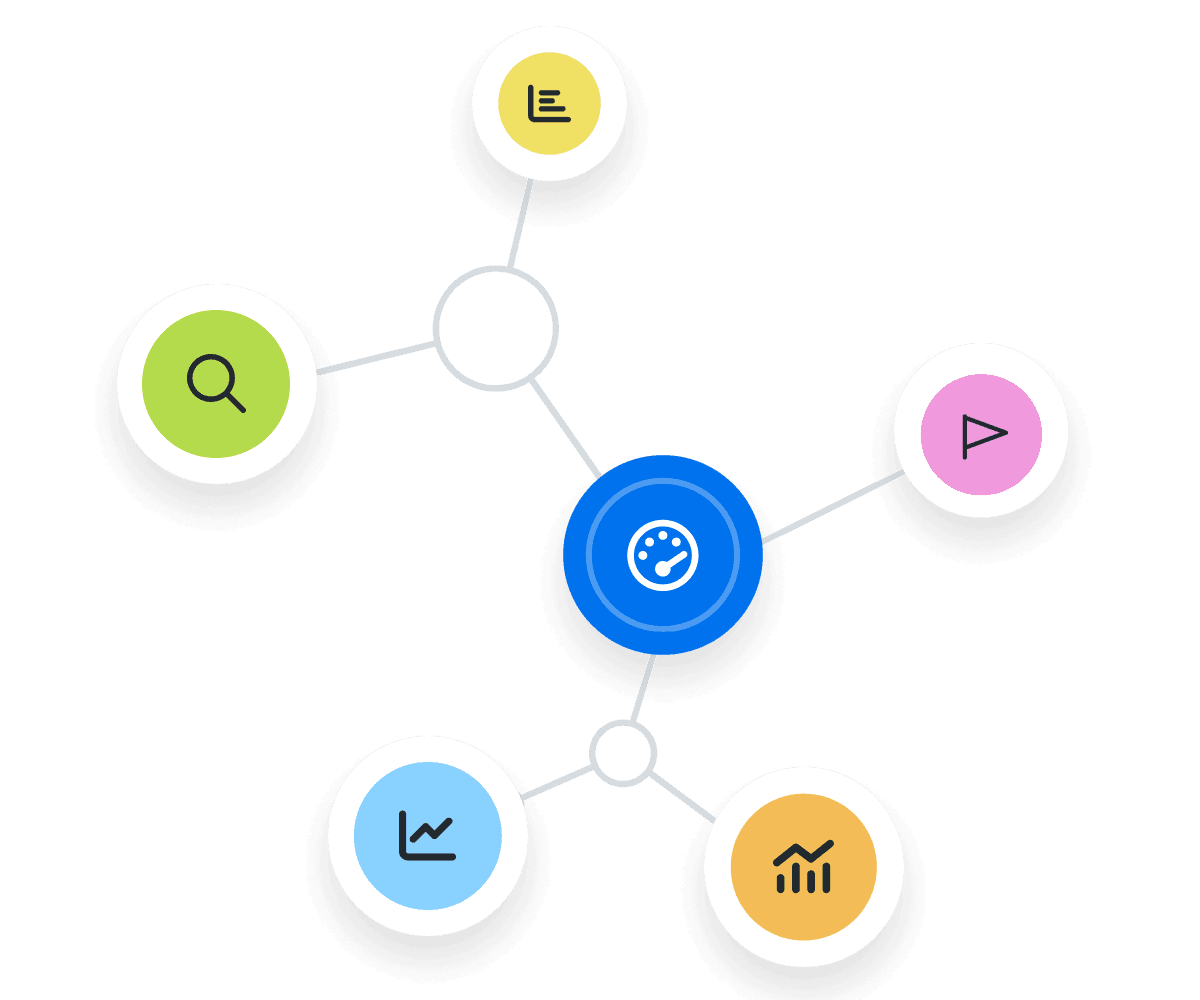
Understanding Unique vs. Total Opens
Unique opens and total opens are critical metrics in email marketing, each providing distinct insights into how recipients engage with emails. Unique opens count the number of individual recipients who open an email, regardless of how many times they do so. This metric is essential for assessing the initial reach of an email campaign, as it shows how many different people are viewing the content.
Total opens, in contrast, track all instances of an email being opened, including repeated views by the same recipients. This metric indicates the email's ability to engage and retain the audience's attention. A high ratio of total opens to unique opens suggests that the content is compelling enough for readers to revisit.
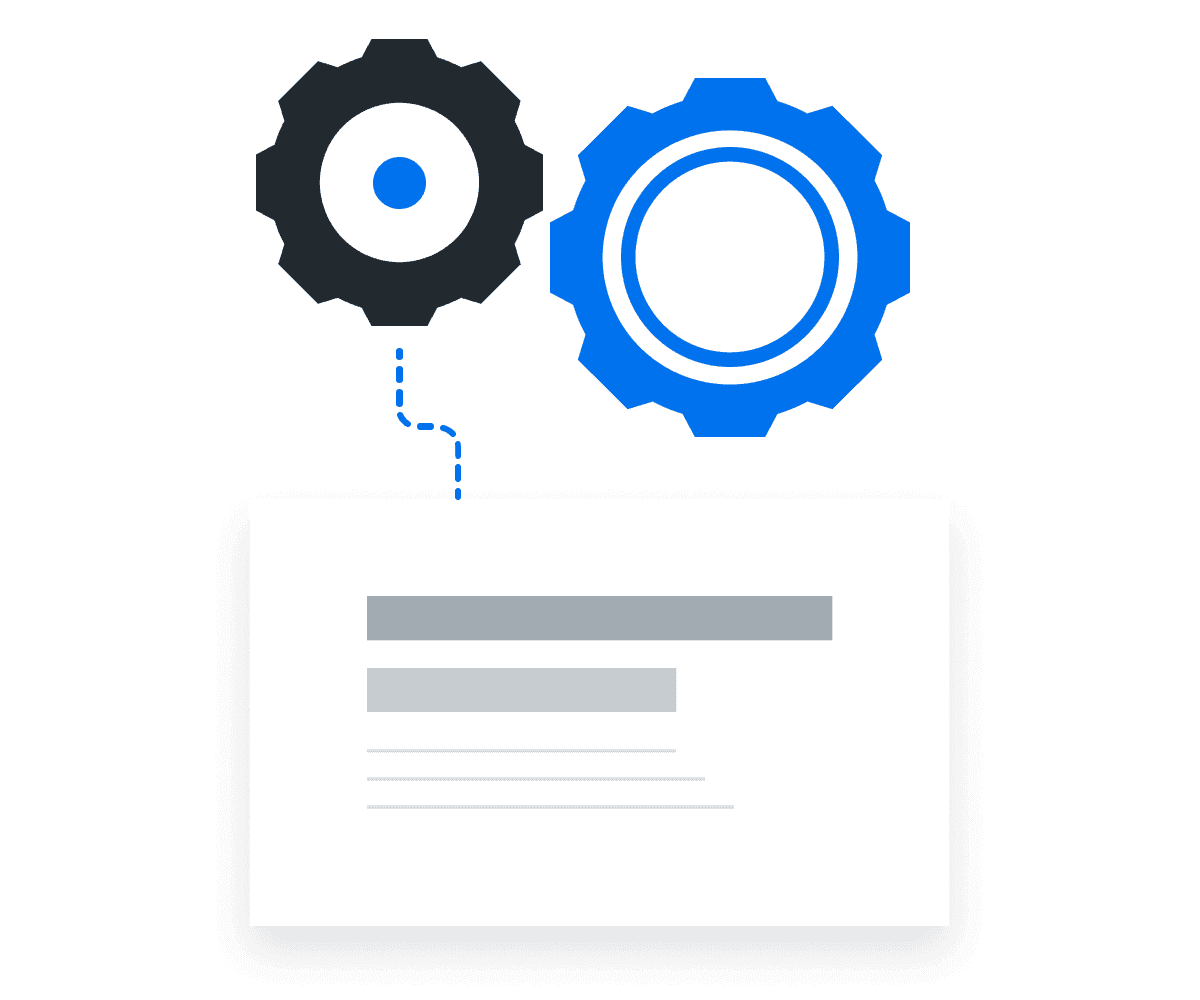
Judge your results against your own criteria. Consider what your brand is about and what its objectives are for email communications. Any metric can be gamed for perceived improvement, and if you just want a higher open rate, you can sensationalize headlines or create clickbait headlines, but if that’s not aligned with your brand and its objectives then what’s the point?
How To Calculate Email Open Rate
To determine Email Open Rate, divide the total number of emails opened by the total number of emails delivered, then multiply the result by 100 to display it as a percentage. This calculation highlights the proportion of the audience who are actively engaging with the email content.
Email Open Rate Formula Example
What Is a Good Email Open Rate?
A good average Email Open Rate typically hovers around 20-25%. However, this varies depending on the industry average and audience. Some industries, like non-profits, may see higher rates, while others, like eCommerce, might aim slightly lower. Keep an eye on the specific niche for more accurate benchmarks.
What Is a Bad Email Open Rate?
A bad average Email Open Rate is generally below 10%. It suggests the emails struggle to capture the audience's attention. However, it's crucial to consider unique circumstances. If emails consistently fall below industry averages, it's time to reassess the email marketing strategy.
How To Set Email Open Rate Benchmarks & Goals
Use historical data to establish email marketing benchmarks specific to clients. Analyzing past email campaigns' performance, segmenting the audience, and considering seasonal trends help create more tailored expectations.
To gain deeper insights into Email Open Rate, consider segmenting the audience. Compare open rates for different demographics, locations, or interests. This granularity uncovers hidden opportunities and helps refine an email strategy.
Why Email Open Rate Matters to Clients
For clients, Email Open Rate is a great KPI to gauge audience interest and content relevance. If an email is opened, it’s the initial nod of approval from the recipient.
This metric is crucial for clients as it directly ties to the effectiveness of subject lines and sender reputation. Higher open rates often signal that the email content resonates with the audience, prompting further engagement.
Clients also use this metric to segment their audience, tailoring future communications to those most engaged, potentially increasing the return on investment of their email marketing efforts.
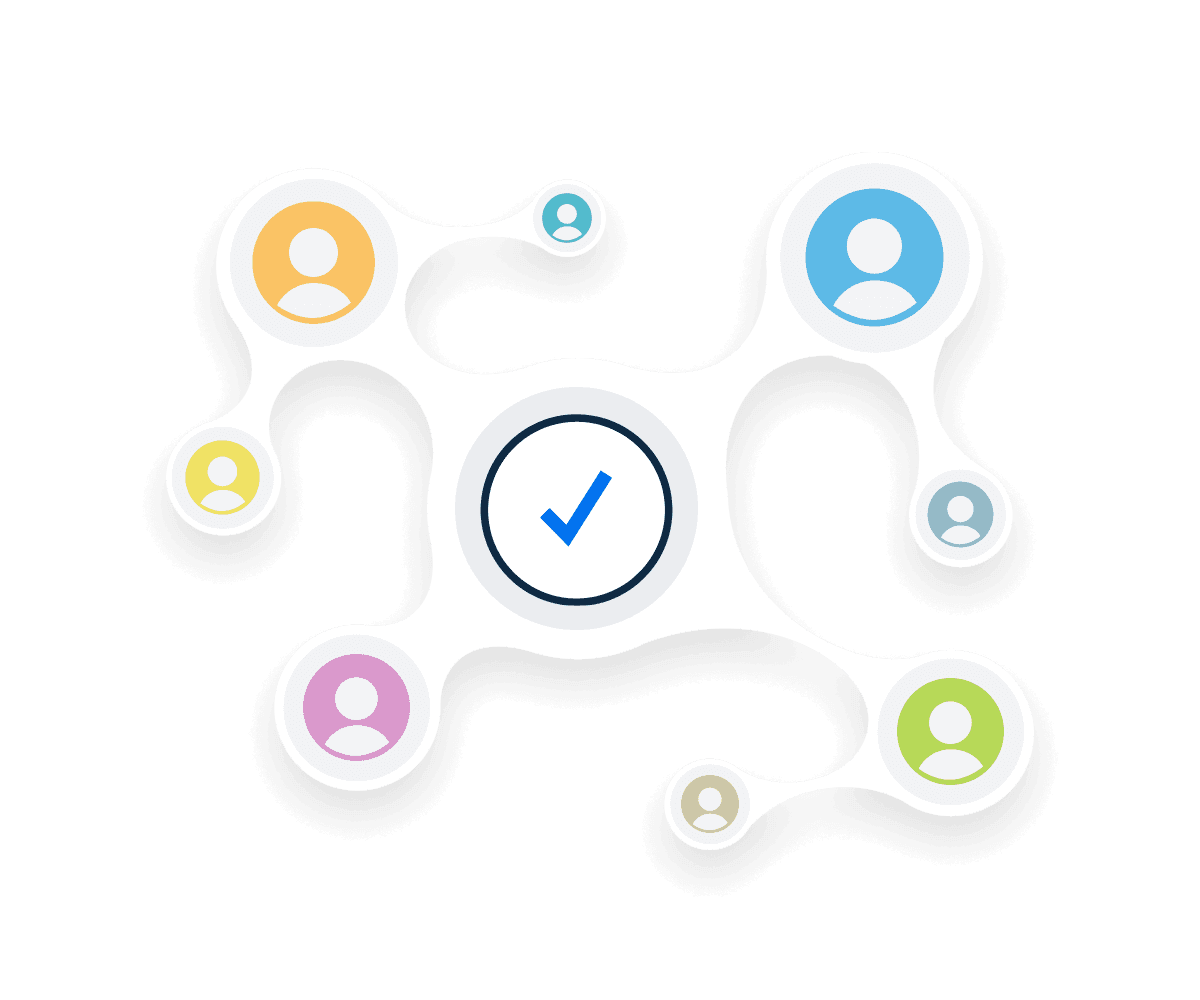
Why Email Open Rate Matters to Agencies
For agencies, the Email Open Rate KPI acts as a gateway to deeper campaign insights. This metric helps agencies evaluate and refine email marketing strategies.
A lower-than-expected open rate prompts a strategic reassessment, leading to improved subject lines or better-targeted content. Additionally, agencies use this KPI to benchmark performance against industry standards, setting realistic goals and expectations with their clients.
By monitoring Email Open Rates over time, agencies gain a clearer understanding of trends and patterns, which is invaluable for crafting more effective and engaging email campaigns in the future.

Best Practices When Analyzing and Reporting on Email Open Rate
Marketing agencies aim to deliver valuable, client-focused reports that help everyone make informed decisions. Analyzing Email Open Rate from various angles is the key to more effective campaigns and getting more eyes on clients’ messages.
Track Trends Over Time
Analyze how Email Open Rate evolves over different time periods. Identify patterns, seasonal trends, and growth opportunities in email marketing strategies.
Campaign-Specific Insights
Analyze Email Open Rates for individual campaigns and devices. Is the client getting more opens on mobile devices than desktop? Identify what works and what doesn't and refine future email campaign strategies.
Align with Client Goals
Show clients how Email Open Rate contributes to their goals, whether it's brand awareness, lead generation, or sales. Connect the dots for them and prove agency value.
Put Email Open Rate in Context
Email Open Rate doesn't exist in isolation. Combine it with other relevant metrics, such as Average Click-Through Rate and Conversion Rate, to gain a holistic view of email marketing campaign impact.
Visualize Email Open Rate Performance
Numbers are powerful, but visuals resonate. Create clear, engaging visual representations of Email Open Rate trends. Charts and graphs make complex data accessible, aiding in conveying insights to stakeholders and fostering data-driven decision-making.
Actionable Recommendations
End a client report with actionable recommendations. Maybe the CTA needs to link to a relevant blog post or a different product. Provide insights on how to improve Email Open Rate and achieve better results in future campaigns.
Mailchimp Dashboard Example
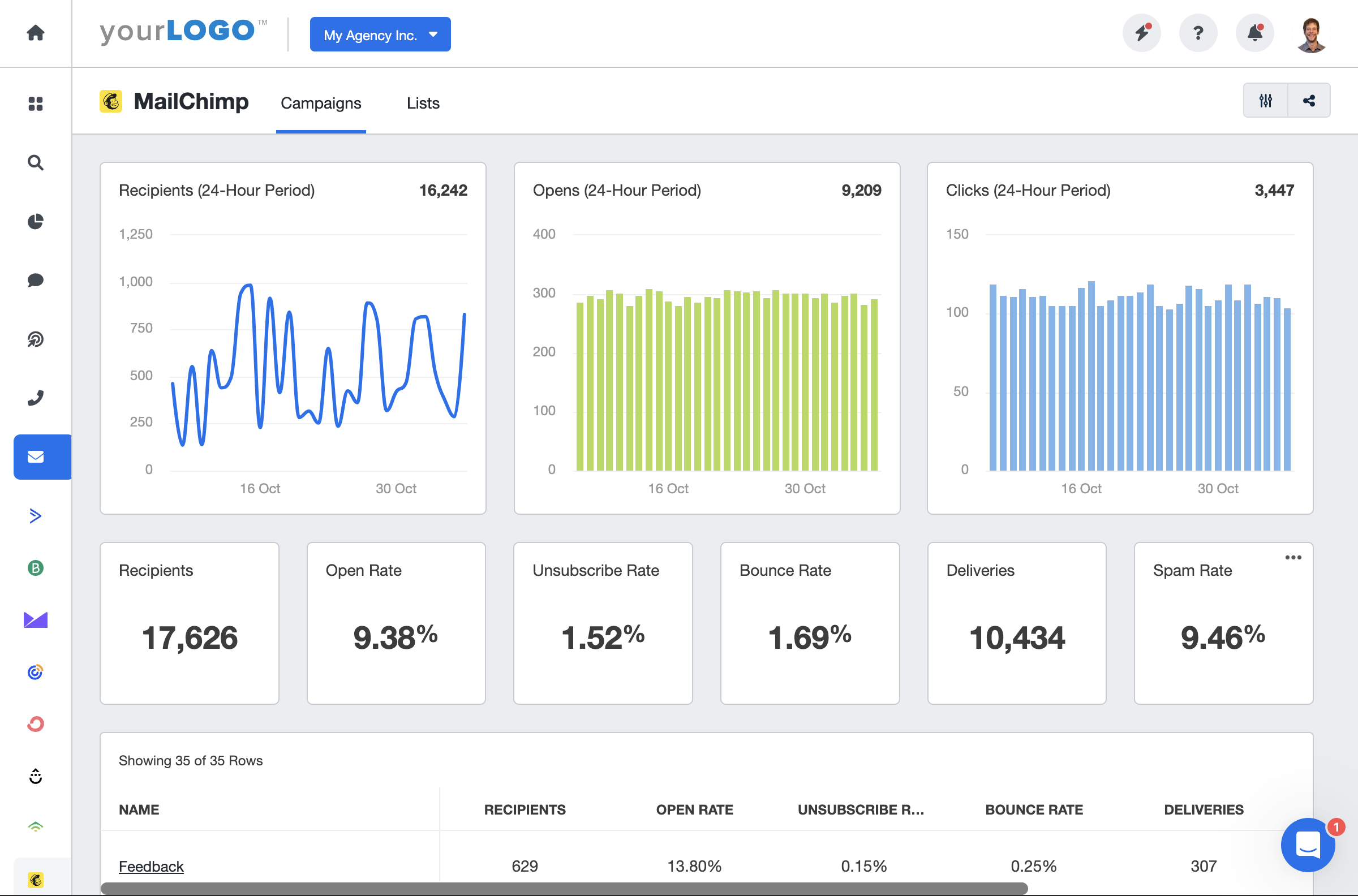
Related Integrations
How To Improve Email Open Rate
Improving Email Open Rate is crucial to get a client’s message across to the right audience. Here are a few tips to implement to enhance the overall effectiveness of email marketing campaigns.
Perfect Timing
Send emails at optimal times to improve open rates. Analyze when an audience is most active, and schedule accordingly for better results.
Segment the Audience
Try segmenting the list more effectively. Personalized content tailored to specific segments resonate better, increasing open rates.
Personalized Subject Lines
Craft tailored email subject lines for audiences. Use curiosity or urgency to grab attention. A well-crafted subject line piques interest and encourages opens.
Related Blog Posts
See More KPI Examples
Get Started for Free

